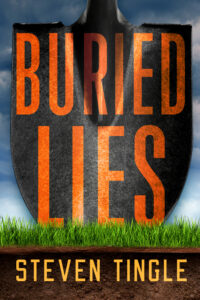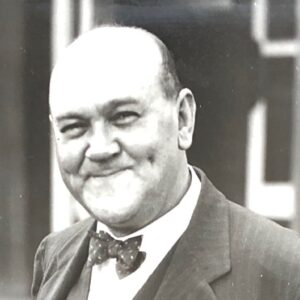In the mid-nineteen-sixties, my father faced a dilemma. At the time, he was an executive with the Butterick Company in Manhattan, which specialized in sewing patterns. He had worked for Butterick for many years, but the company was in the process of being sold to a giant conglomerate. My father had to make a choice: stay with the new organization in a different capacity or cash out his Butterick stock and find new opportunities. He was in his early forties and recently divorced, and his friends and family wondered what he’d decide to do. His announcement couldn’t have shocked them more: “I’m moving to the mountains of western North Carolina to build a golf course.”
Mind you, this was a man who knew absolutely nothing about golf, other than how to play it— poorly. But soon he was the proud owner of 550 acres in a tiny community called Cruso, dressed in head-to-toe Brooks Brothers, working alongside guys in overalls named Junebug and Cooter.
Despite many setbacks, he eventually made his dream come true, and in 1968, Springdale Country Club opened. Never underestimate the power of a mid-life crisis. I was born the following year, and my dad married my mom, a local girl who worked at the new golf course, two years later. The business was their life, and as an only child, the golf course was like my sibling. I was constantly fighting it for the attention of my parents, who worked like the dickens to keep the place going.
But the course was also my kingdom—a 550-acre playground of golf holes, creeks, ponds, thick woods, and twenty cabins my parents rented to out-of-town golfers. There was also a restaurant, a pro shop, and a snack bar where I perfected the art of stealing hot dogs and candy bars. It was also a place where I could let my imagination run wild.
As a kid obsessed with mysteries, I considered every golfer a potential victim as well as a potential suspect, and new ones arrived each day. Some came to play just one round of golf, while others stayed four or five nights in one of the cabins. It was the renters who piqued my interest the most. These were people I could watch and study for days, like a budding anthropologist crouched in the bushes or hidden behind a golf cart.
I stalked these guests and learned their habits. Did they drink too much in the restaurant? Were they kind to the staff? Did the men argue with their wives about tee times and golf swings? Were the wives femme fatales or innocent bystanders? Who seemed shady? Who seemed nervous? Who was most likely to get a golf club to the back of the head? And most importantly, who was the killer?
I studied the course’s employees as well. Cruso is the kind of small, rural community where everyone knows everyone else’s business, and I’d hang around the staff during their smoke/gossip breaks, feigning aloofness, and take mental notes on who was sleeping with who, who had money problems, and who had a field of marijuana hidden somewhere way up in the mountains.
I’d take all this information and concoct elaborate mystery stories, writing them out longhand on notebook paper. I’d then hand the pages over to my seventh-grade English teacher for extra credit. “Well done,” she’d write in red pen on the top of some of the stories, and “too confusing” on others. But no matter her review, she always encouraged me to keep writing.
By the time I was a high school senior, I’d murdered dozens upon dozens of golfers and employees with everything from arsenic-laced orange juice served in the restaurant to a runaway golf cart with cut brake lines to a copperhead hidden in the ball pocket of a golf bag.
But once I left for college, I stopped writing. When I returned to the family golf course four years later to take a job as assistant superintendent, I was focused on other things: marriage, children, paying the rent. I continued to work at the course, eventually becoming the General Manager, but during those years I didn’t write a thing. In late 2008, three years after my father’s death, my mom, in the throes of a nervous breakdown, fired me from the family business. (My relationship with my mom is a book unto itself.) It was a horrible time. I was recently divorced and fully responsible for two young kids. To make matters worse, the country was in a deep financial recession, and jobs, especially jobs in the golf industry, were practically non-existent. I was forced to declare bankruptcy, and my home was foreclosed, but I finally had time to do what had brought me so much joy as a kid: write. Not mysteries this time, but short freelance articles for golf trade magazines. That work led to monthly articles in various lifestyle and travel magazines, which led to corporate copywriting and editing, which finally allowed me and my kids to go to the grocery store without a calculator and an envelope full of coupons.
But I had an itch. I needed to kill someone. On paper, that is. It took years, but I completed a mystery novel set in the little community of Cruso, North Carolina, the place where I’d grown up and worked for the majority of my life. To my surprise, the novel was published. The golf course is only briefly mentioned in that book (I was still a little miffed that despite my pleading, my mom had sold the course during the time I was writing the book). But in the sequel, the golf course is a main character. It’s front and center, and where almost all of the action takes place. A real estate attorney is standing in a bunker near the sixteenth fairway when a golf ball beans him in the side of the head. He dies instantly. The poor guy never saw it coming. But he should have. That golf ball had been headed his way since I was in the seventh grade.
***


















